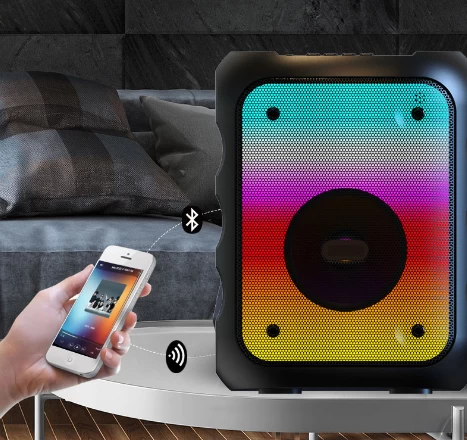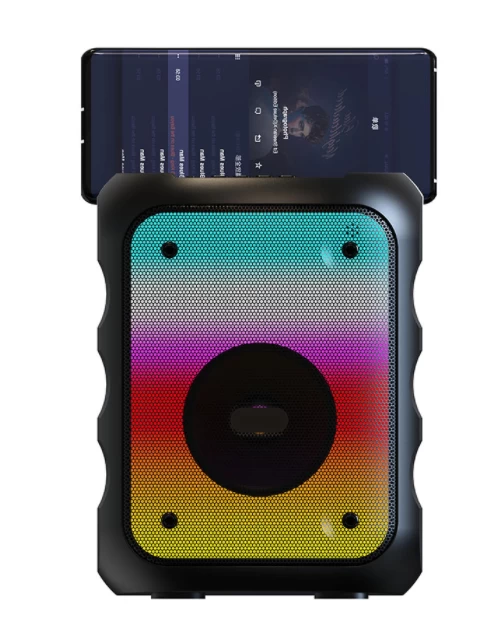How to choose a good speaker
The performance of the overall technical indicators of the best portable speaker system depends on the performance of each unit itself. If the technical indicators of each unit in the system are high, then the overall technical indicators of the system are good.
There are six main technical indicators: frequency response, signal-to-noise ratio, dynamic range, distortion, transient response, stereo separation, and stereo balance.
Frequency response
The so-called frequency response refers to the frequency range of the audio equipment playback and the relationship between the amplitude of the sound wave and the frequency. Generally, the frequency range of 1000 Hz is used as a reference to detect this index, and the frequency range is expressed in decibels (dB) by logarithm.
The overall frequency response of the sound system is theoretically required to be 20~20000Hz. In actual use, due to the circuit structure, the quality of components and other reasons, it is often not possible to meet this requirement, but generally at least 32~18000Hz.

SNR
The so-called signal-to-noise ratio refers to the ratio of the best portable speaker system's playback sound to the sound source software and the new noise generated by the entire system. The noise mainly includes thermal noise, AC noise, mechanical noise, and so on. Generally, this index is expressed in decibels (dB) as the logarithmic ratio of the rated output power of the playback signal to the system noise output power when there is no signal input. Generally, the signal-to-noise ratio of the best portable speaker system needs to be above 85dB.
Dynamic Range
The dynamic range refers to the logarithmic value of the ratio of the maximum undistorted output power of the best portable speaker system to the static system noise output power, and the unit is decibel (dB). Generally speaking, the dynamic range of the best portable speaker system with better performance is above 100 (dB).

Distortion
Distortion means that after the best portable speaker system replays the audio source signal, some parts of the original audio source signal (waveform, frequency, etc.) have changed. The distortion of the best portable speaker system mainly has the following types:
a. Harmonic distortion: The so-called harmonic distortion means that the sound reproduced by the best portable speaker system has many additional harmonic components than the original signal source. This additional harmonic component signal is a multiple or division of the source frequency and is caused by the negative feedback network or the non-linear characteristics of the amplifier. The harmonic distortion of the hi-fi best portable speaker system should be less than 1%.
b. Intermodulation distortion: Intermodulation distortion is also a kind of nonlinear distortion. It is more than two frequency components mixed in a certain proportion, and each frequency signal is modulated with each other. After passing through the playback device, a newly added nonlinear signal is generated. The signal Signals that include sums and differences between individual signals.
c. Transient distortion: Transient distortion is also called transient response. Its generation is mainly due to the slow reflection of the amplifier when a large transient signal is suddenly added to the amplifier, thereby distorting the signal. Generally, after the input square wave signal passes through the playback device, observe whether the envelope waveform of the output signal of the amplifier is similar to the input square wave waveform to express the ability of the amplifier to follow the transient signal.
Stereo separation
Stereo separation indicates the degree of isolation between the left and right channels in a stereo system, and it actually reflects the degree of crosstalk between the left and right channels. If there is a lot of crosstalk between the two channels, the three-dimensionality of the reproduced sound will be reduced.
stereo balance
Stereo balance indicates the difference between the left and right channel gains in the stereo playback system. If the imbalance is too large, the sound image positioning of the reproduced stereo will be shifted. Generally, the stereo balance of a high-quality audio system should be less than 1dB.


